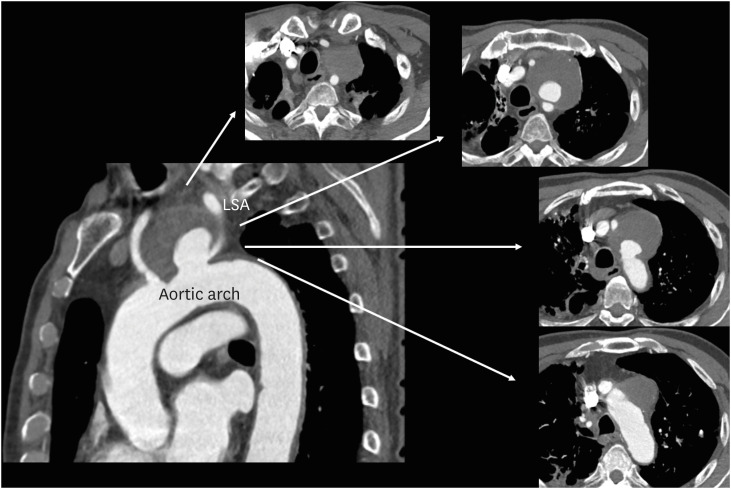Korean Circ J.
2021 Apr;51(4):379-381. 10.4070/kcj.2020.0529.
Ortner's Syndrome Discovered by a Routine Echocardiographic Examination: a Huge Aneurysmal Dilatation of the Aortic Arch as a Cause of Hoarseness
- Affiliations
-
- 1Division of Cardiology, Department of Internal Medicine, Chungnam National University Hospital, Chungnam National University College of Medicine, Daejeon, Korea
- KMID: 2514644
- DOI: http://doi.org/10.4070/kcj.2020.0529
Figure
Reference
-
1. Kheok SW, Salkade PR, Bangaragiri A, Koh NS, Chen RC. Cardiovascular hoarseness (Ortner's syndrome): a pictorial review. Curr Probl Diagn Radiol. 2020; S0363-0188(20)30190-0.2. Rommens KL, Estrera AL. Contemporary management of aortic arch aneurysm. Semin Thorac Cardiovasc Surg. 2019; 31:697–702. PMID: 30980932.3. Choi BK, Lee HC, Lee HW, et al. Successful treatment of a ruptured aortic arch aneurysm using a hybrid procedure. Korean Circ J. 2011; 41:469–473. PMID: 21949532.
- Full Text Links
- Actions
-
Cited
- CITED
-
- Close
- Share
- Similar articles
-
- A case of thoracic aortic aneurysm presenting as hoarseness of voice: ortner's syndrome
- Reversible Ortner’s Syndrome as a Presenting Feature of Thyrotoxicosis in an Adolescent: A Rare Case Report
- Ortner Syndrome due to Concomitant Mitral Stenosis and Bronchiectasis
- Comparison of the Mid-term Changes at the Remnant Distal Aorta after Aortic Arch Replacement or Ascending Aortic Replacement for Treating Type A Aortic Dissection
- Total Arch Replacement for Chronic Aortic Aneurysmal Dissection Patient with Aberrant Subclavian Artery



